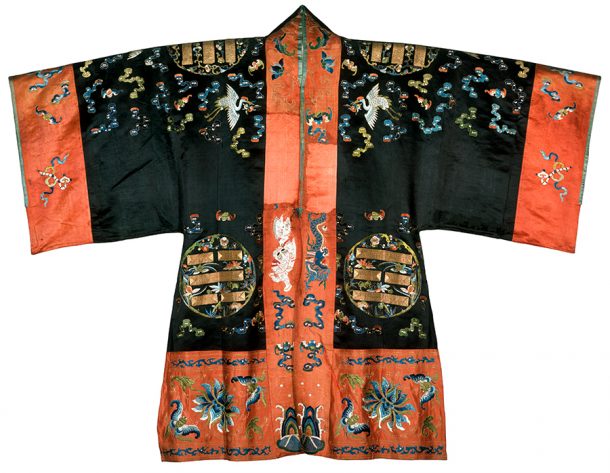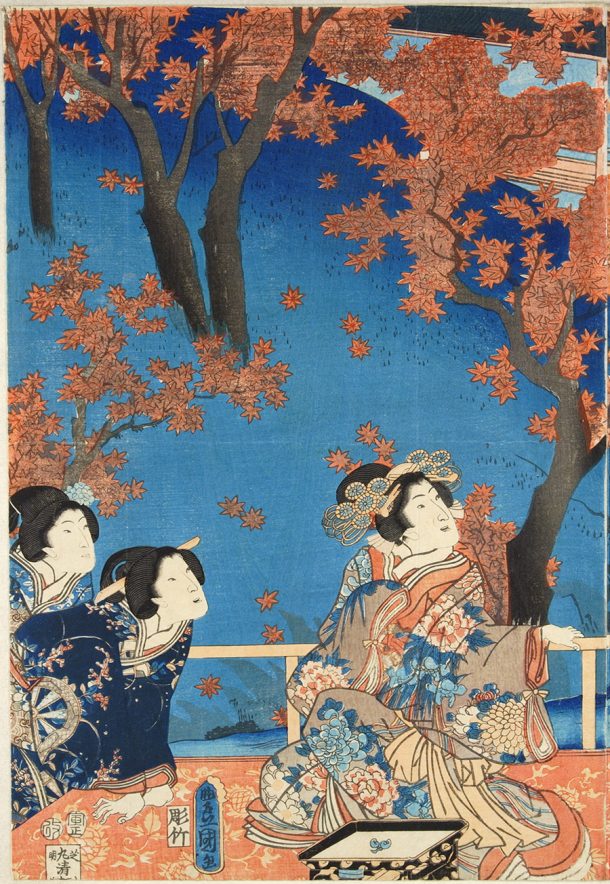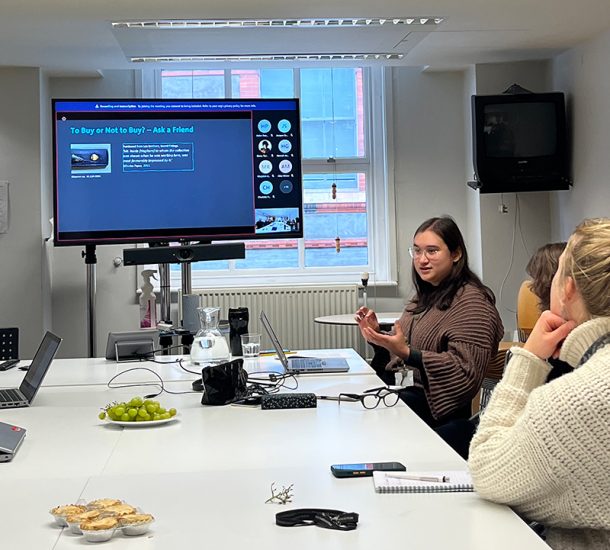East Asian objects have been collected by the V&A since its very inception. It was not until the 1970s, however, that works from China, Korea and Japan were brought together in a single collection, rather than being scattered across the other, material-based, departments. Today, the East Asia section, and its internationally renowned holdings, are part of the museum’s Asia Department.
The public and researchers have long been interested in these objects and the stories they tell. We are curious about how they were made and used, and what they might tell us about the cultures and histories of East Asia. There has also been a growing interest in the ‘biographies’ of these objects: where they came from specifically, their creators, users and collectors, and how they eventually made their ways into the V&A. All this forms part of provenance research. An object’s provenance can enable us to understand some of its original contexts and meanings, and thus ensure appropriate care and interpretation of the object within the museum context. Apart from that, it can also help to reveal networks of imperialism, trade and collecting that have become increasingly global and complex since the 19th century, which in turn has implications for understanding many other objects held in museum collections internationally. While we know about purchases the V&A made from major dealers such as Yamanaka and Co., S. M. Franck and Siegfried Bing, we can continue to deepen our understanding of the many smaller, lesser-known dealers from whom the V&A acquired East Asian objects between 1852 – 1912, the first 60 years of the museum. Who were they? What can we discover about them?

Between October and December 2022, I aimed to answer some of these exciting questions as part of a Doctoral Training Partnership placement supported by the Arts and Humanities Research Council (AHRC) and the Scottish Graduate School for Arts and Humanities (SGSAH). During these months, I was based in both the Asia Department and the V&A Research Institute (VARI). This placement was a secondment from my main role as a full-time PhD student at the University of Glasgow and National Museums Scotland, where I research Chinese collections in Scottish museums, whose collections grew exponentially in the late 19th to early 20th century.
I first created a list of everyone the V&A had purchased East Asian objects from during the first 60 years of the museum. This involved going through every object entry in the Acquisition Registers, which are a physical archive in the Asia department. The resulting list consists of over 300 individuals and organisations — known generically as ‘vendors’ — who had varying connections with East Asia, each other, and the V&A. What I found particularly interesting was how different these vendors were from each other, from manufacturers of thermometers to importers of Bonsai trees. Further archival research has also identified vendors who acted on behalf of the museum to purchase objects such as printmaking tools and pigments. On the flip side, I also came across intricate drawings of, and fierce discussions among museum staff about, objects that the museum did not end up purchasing—exemplifying the fluid and ever-changing nature of museum collections.

The seven weeks spent with the records gave me a bird’s eye, numerical view of East Asian objects in the early decades of the V&A. It was surprising to learn that over 43,000 East Asian objects were part of the V&A’s collection by the time the museum was 60 years old. I was even more surprised to learn that among these, at least 82% were purchases, rather than being gifted or bequeathed, to the V&A. This clearly reflects the history of a museum that began with no pre-existing, royal or private, collection. The large proportion of purchases invites us to ponder on the myriad relationships the staff had with different vendors, and the perceptions of East Asia the curators held and hoped to showcase to the eager public. Find out more about the findings of my research.
While sharing my discoveries with colleagues across the museum at the end of my placement, we discovered some interesting overlaps in vendors and object histories across curatorial departments – suggesting that my placement was only the start of what could be incredibly exciting future research into the histories of the V&A’s collections. As a doctoral researcher who is normally external to the V&A, I know that many interesting connections also lie beyond the V&A, studied by researchers working globally. To hopefully aid these efforts, the acquisition information of the 43,000 physical object entries I had sifted through are being made available online on the V&A’s Explore the Collections database.
I believe my placement demonstrates that successful provenance research in a museum requires sustained, cross-departmental efforts. I’m therefore grateful for the expertise, time and patience so generously offered by my placement supervisors: Anna Jackson, Jacques Schuhmacher and Elaine Tierney. My gratitude of course also extends to all colleagues in the Asia Department, VARI, Registry, Collections Care and Systems, and the National Art Library.

Apart from benefitting from the V&A’s many exhibitions, lectures and seminars, I also gained the unique experience of working full-time across two departments in a museum full of dedicated and wonderful colleagues (and some incredible home-made banana bread), which I am sure to take into my degree and workplaces. Since this placement research is tangentially related to my PhD, these months have challenged me to focus on a methodology that I might not otherwise have engaged with as deeply. Most excitingly, I believe my placement has reiterated the necessity of continued provenance research into the V&A’s collections, imbued as they are with wonderful, complex, at times difficult, and always important stories.


